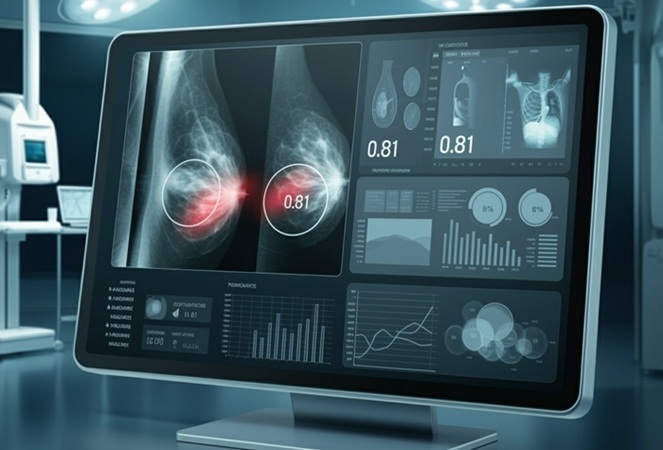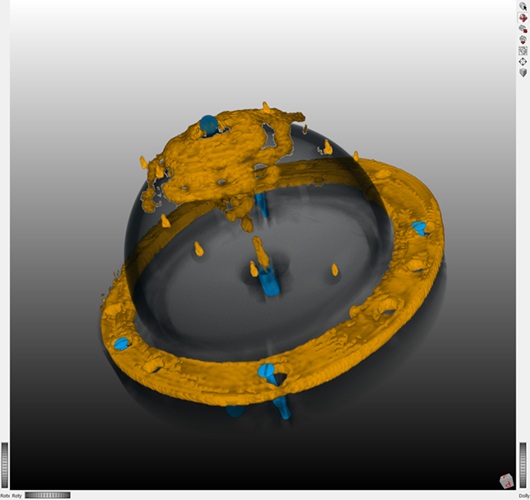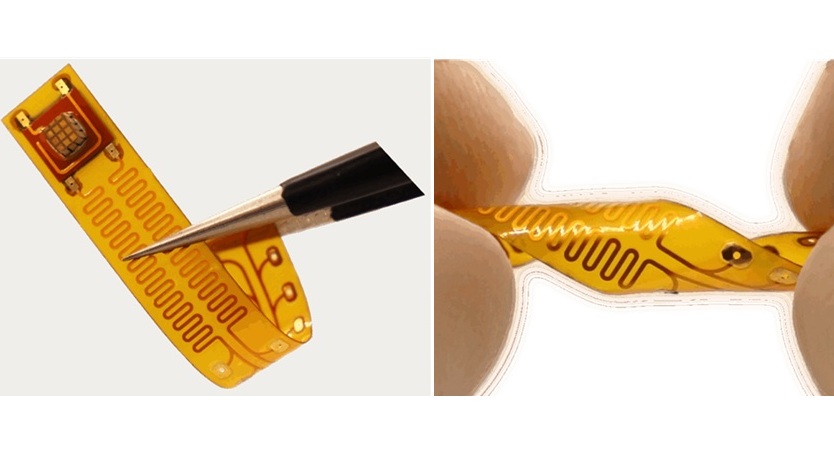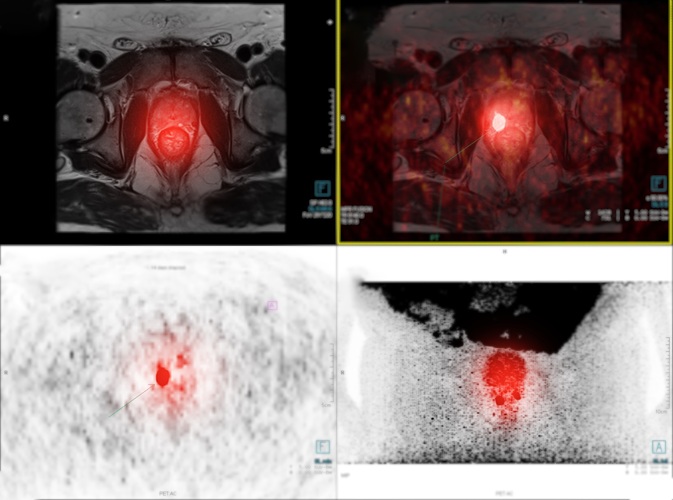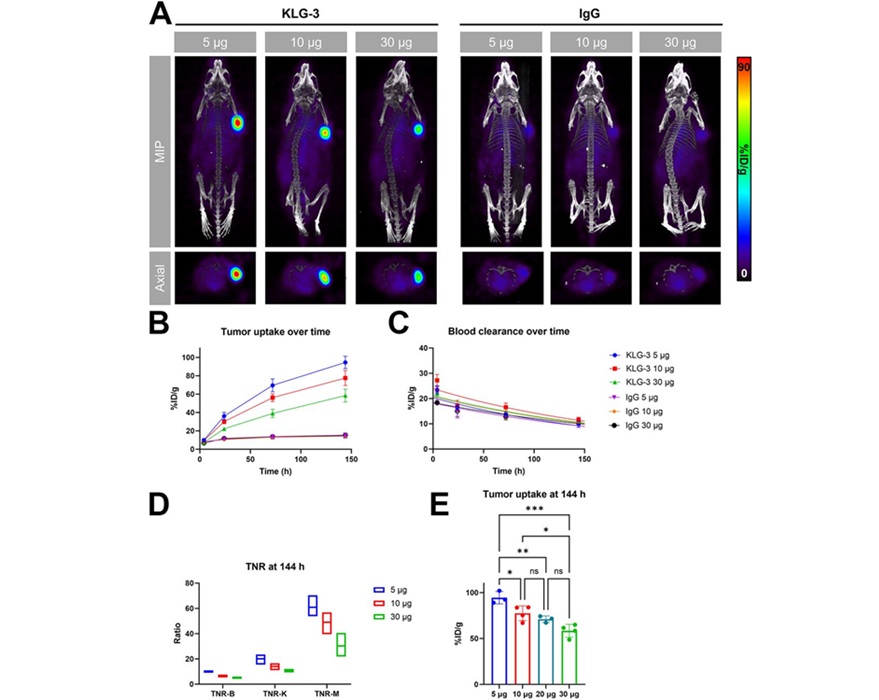Automated Modelling Synthesizes Brain Scan Templates
|
By MedImaging International staff writers Posted on 09 Dec 2019 |
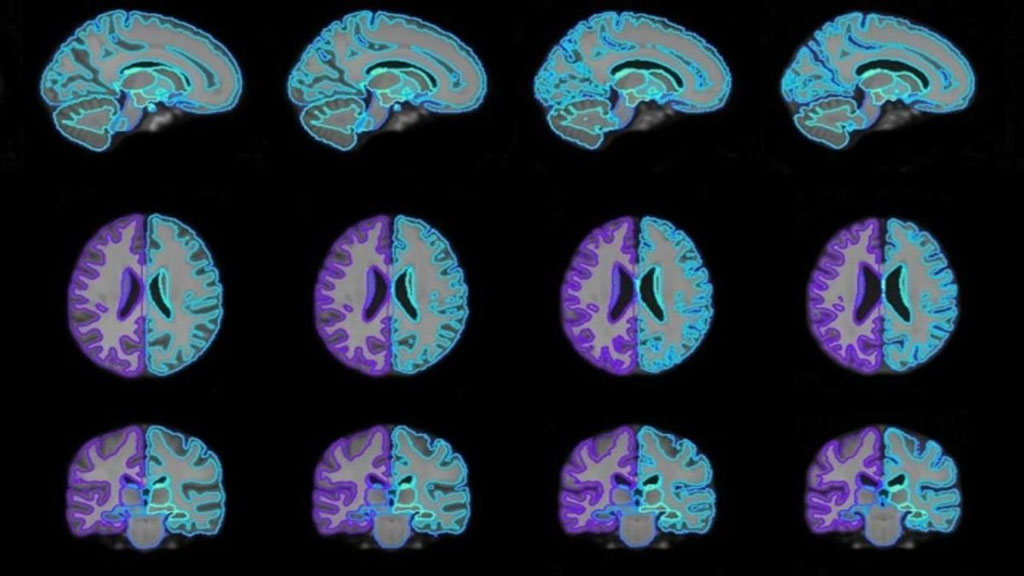
Image: On-demand brain scan templates of various ages generated using the joint CNN platform (Photo courtesy of MIT)
Automated neural network models accelerate the creation and customization of conditional atlases used in medical-image analysis.
Developed at the Massachusetts Institute of Technology (MIT, Cambridge, MA, USA) and Cornell University (Cornell; Ithaca, NY, USA), the probabilistic model is based on one conditional neural network (CNN) that yields either universal or conditional templates, and another CNN that provides efficient alignment of the images to templates. The joint CNN is fed a random image from a dataset encoded with desired patient attributes; from that, it estimates an attribute-conditional atlas. The second CNN aligns the estimated atlas with the input image, generating a deformation field, which is then used to train a loss function to reduce deviations from a given value, thus learning to minimize differences between the learned atlas and each image.
The networks continuously refine the atlas to smoothly align to any given image across the dataset. The result is an atlas that has learned how specific attributes, such as age, sex, and disease, correlate to structural variations across all images in a dataset. By plugging new patient attributes into the function, it leverages all learned information across the dataset to synthesize an on-demand atlas, even if that attribute data is missing or scarce in the dataset. The study was presented at the annual conference on Neural Information Processing Systems, held during December 2019 in Vancouver (Canada).
“A big dream is to build one function that can generate conditional atlases for any subpopulation, spanning birth to 90 years old. Researchers could log into a webpage, input an age, sex, diseases, and other parameters, and get an on-demand conditional atlas,” said lead author and study presenter Adrian Dalca, PhD, of MIT. “That would be wonderful, because everyone can refer to this one function as a single universal atlas reference. Atlases are central to many medical image analyses; this method can build a lot more of them, and build conditional ones as well.”
Traditional atlas-building methods run lengthy, iterative optimization processes on all images in a dataset. For example, they align all 3D brain scans to an initial (often blurry) atlas, and compute a new average image from the aligned scans. They repeat this iterative process for all images. This computes a final atlas that minimizes the extent to which all scans in the dataset must deform to match the atlas. Doing this process for patient subpopulations can be complex and imprecise if there isn't enough data available.
The atlases are available online at the MIT VoxelMorph library.
Related Links:
Massachusetts Institute of Technology
Cornell University
VoxelMorph library
Developed at the Massachusetts Institute of Technology (MIT, Cambridge, MA, USA) and Cornell University (Cornell; Ithaca, NY, USA), the probabilistic model is based on one conditional neural network (CNN) that yields either universal or conditional templates, and another CNN that provides efficient alignment of the images to templates. The joint CNN is fed a random image from a dataset encoded with desired patient attributes; from that, it estimates an attribute-conditional atlas. The second CNN aligns the estimated atlas with the input image, generating a deformation field, which is then used to train a loss function to reduce deviations from a given value, thus learning to minimize differences between the learned atlas and each image.
The networks continuously refine the atlas to smoothly align to any given image across the dataset. The result is an atlas that has learned how specific attributes, such as age, sex, and disease, correlate to structural variations across all images in a dataset. By plugging new patient attributes into the function, it leverages all learned information across the dataset to synthesize an on-demand atlas, even if that attribute data is missing or scarce in the dataset. The study was presented at the annual conference on Neural Information Processing Systems, held during December 2019 in Vancouver (Canada).
“A big dream is to build one function that can generate conditional atlases for any subpopulation, spanning birth to 90 years old. Researchers could log into a webpage, input an age, sex, diseases, and other parameters, and get an on-demand conditional atlas,” said lead author and study presenter Adrian Dalca, PhD, of MIT. “That would be wonderful, because everyone can refer to this one function as a single universal atlas reference. Atlases are central to many medical image analyses; this method can build a lot more of them, and build conditional ones as well.”
Traditional atlas-building methods run lengthy, iterative optimization processes on all images in a dataset. For example, they align all 3D brain scans to an initial (often blurry) atlas, and compute a new average image from the aligned scans. They repeat this iterative process for all images. This computes a final atlas that minimizes the extent to which all scans in the dataset must deform to match the atlas. Doing this process for patient subpopulations can be complex and imprecise if there isn't enough data available.
The atlases are available online at the MIT VoxelMorph library.
Related Links:
Massachusetts Institute of Technology
Cornell University
VoxelMorph library
Latest General/Advanced Imaging News
- AI Algorithm Accurately Predicts Pancreatic Cancer Metastasis Using Routine CT Images
- Cutting-Edge Angio-CT Solution Offers New Therapeutic Possibilities
- Extending CT Imaging Detects Hidden Blood Clots in Stroke Patients
- Groundbreaking AI Model Accurately Segments Liver Tumors from CT Scans
- New CT-Based Indicator Helps Predict Life-Threatening Postpartum Bleeding Cases
- CT Colonography Beats Stool DNA Testing for Colon Cancer Screening
- First-Of-Its-Kind Wearable Device Offers Revolutionary Alternative to CT Scans
- AI-Based CT Scan Analysis Predicts Early-Stage Kidney Damage Due to Cancer Treatments
- CT-Based Deep Learning-Driven Tool to Enhance Liver Cancer Diagnosis
- AI-Powered Imaging System Improves Lung Cancer Diagnosis
- AI Model Significantly Enhances Low-Dose CT Capabilities
- Ultra-Low Dose CT Aids Pneumonia Diagnosis in Immunocompromised Patients
- AI Reduces CT Lung Cancer Screening Workload by Almost 80%
- Cutting-Edge Technology Combines Light and Sound for Real-Time Stroke Monitoring
- AI System Detects Subtle Changes in Series of Medical Images Over Time
- New CT Scan Technique to Improve Prognosis and Treatments for Head and Neck Cancers
Channels
Radiography
view channel
AI Hybrid Strategy Improves Mammogram Interpretation
Breast cancer screening programs rely heavily on radiologists interpreting mammograms, a process that is time-intensive and subject to errors. While artificial intelligence (AI) models have shown strong... Read more
AI Technology Predicts Personalized Five-Year Risk of Developing Breast Cancer
Breast cancer remains one of the most common cancers among women, with about one in eight receiving a diagnosis in their lifetime. Despite widespread use of mammography, about 34% of patients in the U.... Read moreMRI
view channel
AI-Assisted Model Enhances MRI Heart Scans
A cardiac MRI can reveal critical information about the heart’s function and any abnormalities, but traditional scans take 30 to 90 minutes and often suffer from poor image quality due to patient movement.... Read more
AI Model Outperforms Doctors at Identifying Patients Most At-Risk of Cardiac Arrest
Hypertrophic cardiomyopathy is one of the most common inherited heart conditions and a leading cause of sudden cardiac death in young individuals and athletes. While many patients live normal lives, some... Read moreUltrasound
view channel
Non-Invasive Ultrasound-Based Tool Accurately Detects Infant Meningitis
Meningitis, an inflammation of the membranes surrounding the brain and spinal cord, can be fatal in infants if not diagnosed and treated early. Even when treated, it may leave lasting damage, such as cognitive... Read more
Breakthrough Deep Learning Model Enhances Handheld 3D Medical Imaging
Ultrasound imaging is a vital diagnostic technique used to visualize internal organs and tissues in real time and to guide procedures such as biopsies and injections. When paired with photoacoustic imaging... Read moreNuclear Medicine
view channel
New Camera Sees Inside Human Body for Enhanced Scanning and Diagnosis
Nuclear medicine scans like single-photon emission computed tomography (SPECT) allow doctors to observe heart function, track blood flow, and detect hidden diseases. However, current detectors are either... Read more
Novel Bacteria-Specific PET Imaging Approach Detects Hard-To-Diagnose Lung Infections
Mycobacteroides abscessus is a rapidly growing mycobacteria that primarily affects immunocompromised patients and those with underlying lung diseases, such as cystic fibrosis or chronic obstructive pulmonary... Read moreImaging IT
view channel
New Google Cloud Medical Imaging Suite Makes Imaging Healthcare Data More Accessible
Medical imaging is a critical tool used to diagnose patients, and there are billions of medical images scanned globally each year. Imaging data accounts for about 90% of all healthcare data1 and, until... Read more
Global AI in Medical Diagnostics Market to Be Driven by Demand for Image Recognition in Radiology
The global artificial intelligence (AI) in medical diagnostics market is expanding with early disease detection being one of its key applications and image recognition becoming a compelling consumer proposition... Read moreIndustry News
view channel
GE HealthCare and NVIDIA Collaboration to Reimagine Diagnostic Imaging
GE HealthCare (Chicago, IL, USA) has entered into a collaboration with NVIDIA (Santa Clara, CA, USA), expanding the existing relationship between the two companies to focus on pioneering innovation in... Read more
Patient-Specific 3D-Printed Phantoms Transform CT Imaging
New research has highlighted how anatomically precise, patient-specific 3D-printed phantoms are proving to be scalable, cost-effective, and efficient tools in the development of new CT scan algorithms... Read more
Siemens and Sectra Collaborate on Enhancing Radiology Workflows
Siemens Healthineers (Forchheim, Germany) and Sectra (Linköping, Sweden) have entered into a collaboration aimed at enhancing radiologists' diagnostic capabilities and, in turn, improving patient care... Read more












